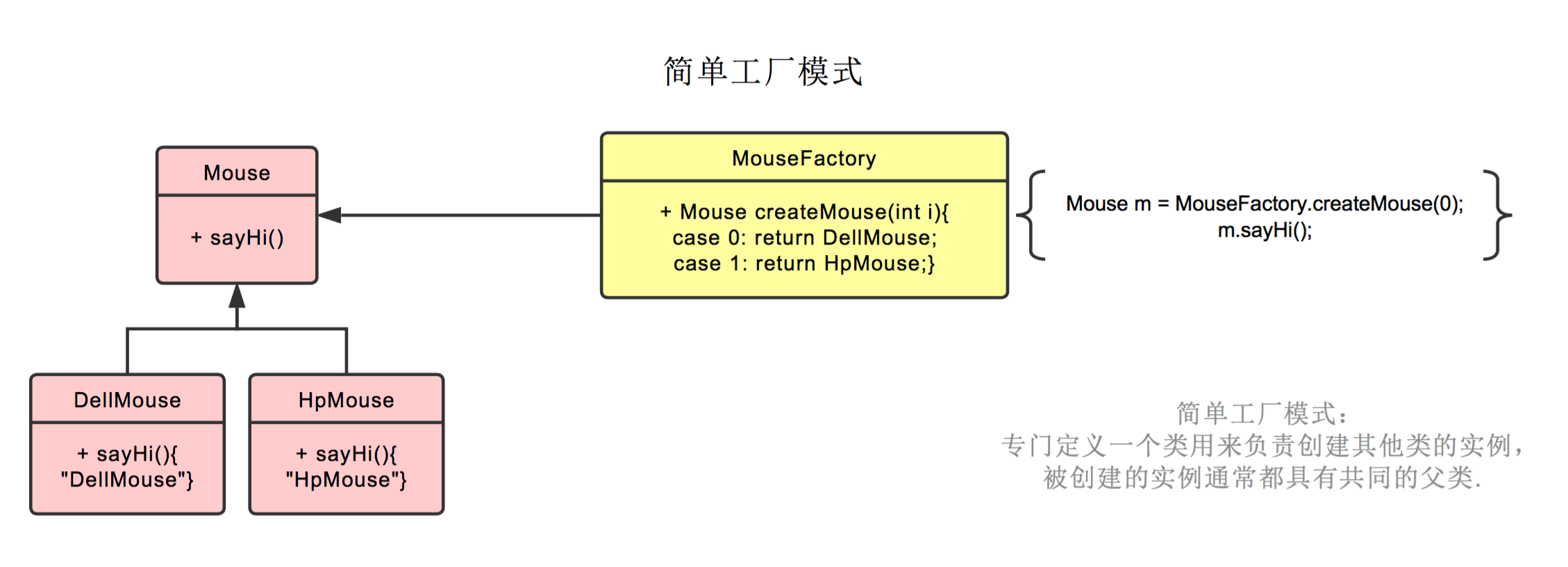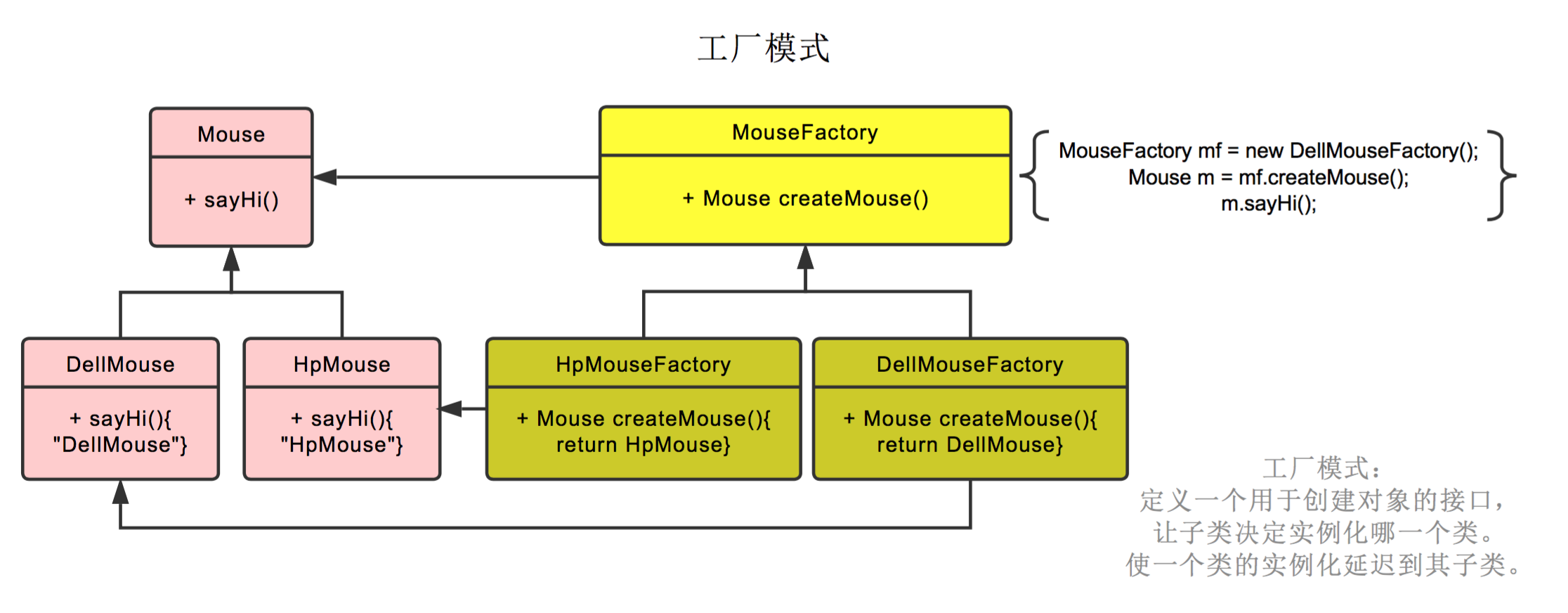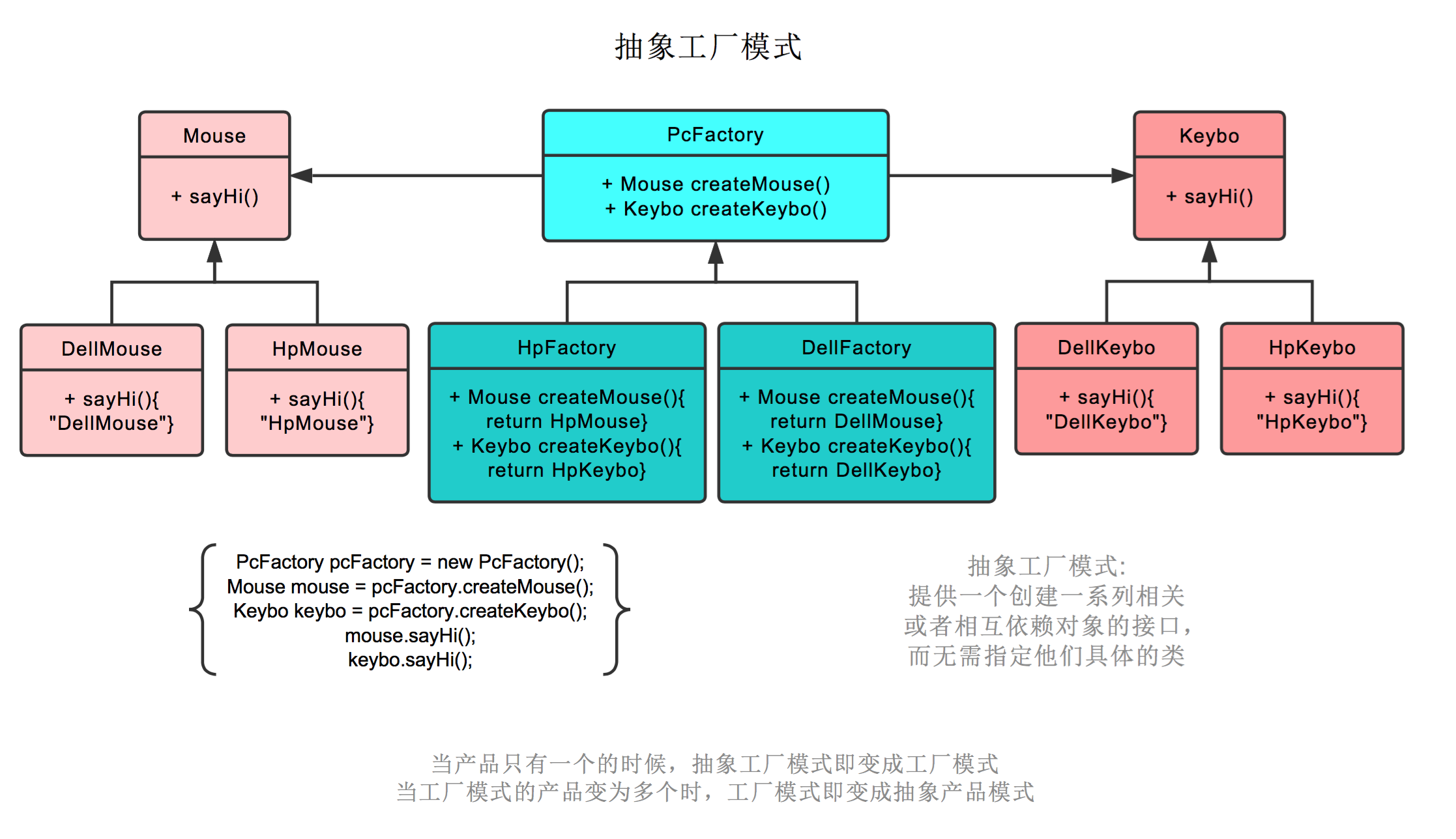一:工厂方法模式的优点
--->工厂方法模式是类的创建模式,又叫做虚拟构造子(Virtual Constructor)模式或者多态性工厂(Polymorphic Factory)模式。
--->工厂方法模式的用意是定义一个创建产品对象的工厂接口,将实际创建工作推迟到子类中
二:工厂方法模式的缺点
--->
三:应用场景
--->如果使用简单工厂模式,则工厂类必定过于臃肿。因为简单工厂模式只有一个工厂类,它需要处理所有的创建的逻辑。假如以上需求暂时只支持3种导出的格式以及2种导出的结构,那工厂类则需要6个if else来创建6种不同的类型。如果日后需求不断增加,则后果不堪设想。
--->这时候就需要工厂方法模式来处理以上需求。在工厂方法模式中,核心的工厂类不再负责所有的对象的创建,而是将具体创建的工作交给子类去做。这个核心类则摇身一变,成为了一个抽象工厂角色,仅负责给出具体工厂子类必须实现的接口,而不接触哪一个类应当被实例化这种细节。
四:工厂方法模式的角色
--->抽象工厂(ExportFactory)角色:担任这个角色的是工厂方法模式的核心,任何在模式中创建对象的工厂类必须实现这个接口。在实际的系统中,这个角色也常常使用抽象类实现。
--->具体工厂(ExportHtmlFactory、ExportPdfFactory)角色:担任这个角色的是实现了抽象工厂接口的具体JAVA类。具体工厂角色含有与业务密切相关的逻辑,并且受到使用者的调用以创建导出类(如:ExportStandardHtmlFile)。
--->抽象导出(ExportFile)角色:工厂方法模式所创建的对象的超类,也就是所有导出类的共同父类或共同拥有的接口。在实际的系统中,这个角色也常常使用抽象类实现。
--->具体导出(ExportStandardHtmlFile等)角色:这个角色实现了抽象导出(ExportFile)角色所声明的接口,工厂方法模式所创建的每一个对象都是某个具体导出角色的实例。
五:工厂方法模式的代码示例
案例:前台传来不同的信息,生成不同的App工厂类,从而生成不同的App。
[1]工厂接口

1 package com.yeepay.sxf.interfaces; 2 /** 3 * App的工厂接口 4 * @author sxf 5 * 6 */ 7 public interface APPFactoryInterFace { 8 /** 9 * 创建App的方法 10 * @param info 11 * @return 12 */ 13 public App createApp(String info); 14 }
[2]不同产品的工厂类

1 package com.yeepay.sxf.interfaces.impl; 2 3 import com.yeepay.sxf.interfaces.APPFactoryInterFace; 4 import com.yeepay.sxf.interfaces.App; 5 /** 6 * 京东商城App工厂 7 * @author sxf 8 * 9 */ 10 public class JdAppFactory implements APPFactoryInterFace{ 11 12 @Override 13 public App createApp(String info) { 14 // 创建京东App的逻辑代码 15 return new JdApp(); 16 } 17 18 19 } 20 21 22 23 package com.yeepay.sxf.interfaces.impl; 24 25 import com.yeepay.sxf.interfaces.APPFactoryInterFace; 26 import com.yeepay.sxf.interfaces.App; 27 /** 28 * 天猫商城App工厂 29 * @author sxf 30 * 31 */ 32 public class TmAppFactory implements APPFactoryInterFace { 33 34 @Override 35 public App createApp(String info) { 36 //创建天猫app所使用的业务逻辑代码 37 return new TmApp(); 38 } 39 40 41 42 }
[3]产品接口

1 package com.yeepay.sxf.interfaces; 2 /** 3 * 不同app接口 4 * @author sxf 5 * 6 */ 7 public interface App { 8 /** 9 * 下订单 10 * @param orderInfo 11 * @return 12 */ 13 public String giveOrder(String orderInfo); 14 15 /** 16 * 查询订单功能 17 * @param orderId 18 * @return 19 */ 20 public String seachOrder(String orderId); 21 }
[4]不同的产品

1 package com.yeepay.sxf.interfaces.impl; 2 3 import com.yeepay.sxf.interfaces.App; 4 /** 5 * 京东App 6 * @author sxf 7 * 8 */ 9 public class JdApp implements App { 10 11 @Override 12 public String giveOrder(String orderInfo) { 13 // TODO Auto-generated method stub 14 return "向京东下订单:"+orderInfo; 15 } 16 17 @Override 18 public String seachOrder(String orderId) { 19 // TODO Auto-generated method stub 20 return "查询京东的订单id为:"+orderId; 21 } 22 23 24 } 25 26 27 28 29 package com.yeepay.sxf.interfaces.impl; 30 31 import com.yeepay.sxf.interfaces.App; 32 /** 33 * 天猫App 34 * @author sxf 35 * 36 */ 37 public class TmApp implements App { 38 39 @Override 40 public String giveOrder(String orderInfo) { 41 // TODO Auto-generated method stub 42 return "向天猫下订单:"+orderInfo; 43 } 44 45 @Override 46 public String seachOrder(String orderId) { 47 // TODO Auto-generated method stub 48 return "查询天猫的订单orderId"+orderId; 49 } 50 51 52 }
[4]模拟客户端测试

1 package com.yeepay.sxf.test; 2 3 import com.yeepay.sxf.interfaces.APPFactoryInterFace; 4 import com.yeepay.sxf.interfaces.App; 5 import com.yeepay.sxf.interfaces.impl.JdAppFactory; 6 import com.yeepay.sxf.interfaces.impl.TmAppFactory; 7 8 public class Test2 { 9 10 public static void main(String[] args) { 11 //早上10:00:01 12 APPFactoryInterFace factory=new JdAppFactory(); 13 App app=factory.createApp("创建京东工厂需要的材料"); 14 String result=app.giveOrder("一条牛仔裤"); 15 System.out.println("Test2.main()"+result); 16 17 //早上10:00:01 18 factory=new TmAppFactory(); 19 app=factory.createApp("创建天猫工厂需要的材料"); 20 result=app.giveOrder("一条花裙子"); 21 System.out.println("Test2.main()"+result); 22 23 } 24 25 26 }
[5]测试结果
Test2.main()向京东下订单:一条牛仔裤
Test2.main()向天猫下订单:一条花裙子
============简单工厂模式=================

============工厂模式=================

============抽象工厂模式=================

